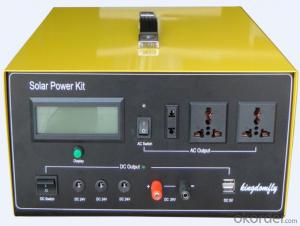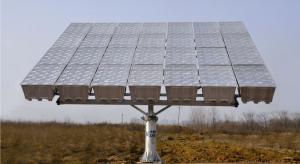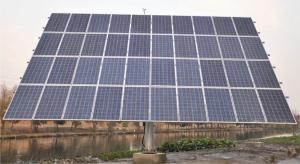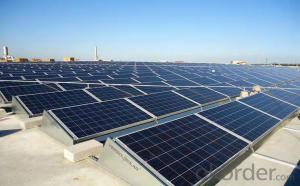My Life Solar Energy Systems Dual Axis Tracking System Solar Mounting System
- Loading Port:
- China Main Port
- Payment Terms:
- TT OR LC
- Min Order Qty:
- -
- Supply Capability:
- -
OKorder Service Pledge
OKorder Financial Service
You Might Also Like
Packaging & Delivery
Packaging Detail:Normal package seaworthy
Delivery Detail:15 days
Specifications
Easy installation Competitive price TUV&SGS test report & CSA certification 15-warranty
Specifications
1) Super smooth beautiful appearance,outstanding quality,large supply.
2) Available in customized surface finishes.
3) Well machined,for example,cutting,drilling and milling with excellent tolerance.
4) Meet with customer’s designs and supply you best price.
5)Usages:Supply for solar panel modules.
Technical characteristics
Installation site:
ground,hillside,and grassland
Installation angle
it is based on customers’ requirements
Installation height
it is basedon customers’ requirements
Solar panel type; with or without frame
Components arrangement :horizontal or vertical
Support track
aluminum alloy extrusion
Quality warranty
15 years
Advantages
1)Quick installation: with high degree of pre-installed rate, the system could be easily installed by using galvanized carbon steel rails for PV Stent, and specially designed connection parts of the PV bracket, which could reduce installation time and cost greatly.
2)Offer unmatched durability: with all structural components comprised of high class stainless steel and anodized aluminum alloy, it is designed for 25 years service life and backed by 15 years warranty.
3)Stand up to extreme weather: The SuninTek solar mount is designed to stand up to the extreme weather complied with the AS/NZ 1170 and other international structure load standard by the skilled engineer. The main support components also have been tested to guarantee its structure and load-carrying capacity.
4)Provide broad installation flexibility: These systems accommodate most commercially available framed solar panels , and they can scale easily from small to large, multi-megawatt installations.
5)Diversified Application: The PV mounting system produced can be adopted by various types of PV cells panels which you can find in the market. It can serve for both mini solar power system and huge plant with megawatt capability.
Main features
1. Installation cost savings.
2. Save installation time.
3. Increase the mechanical strength of solar energy mounting to ensure that wind requirements.
4. The outdoor for installation of solar energy.
5. Length can be customized according to customers.
6. Service life of up to 25 years.
7. Products through the international certification.
8. Stent material composition of the galvanized steel and aluminum.
9. 15 years system and structural guarantee.
10.Flexible post spacing withstands different wind & snow loads.
11. High quality material in Aluminium 6005-T5 and SUS 304.
12.Screws and nuts go with every components needed.
13.Mechanical calculation and reliability tested to ensure highest product quality.
- Q: Can solar energy systems be used in areas with limited access to solar energy system financing options?
- Yes, solar energy systems can still be used in areas with limited access to solar energy system financing options. There are alternative financing options available such as leasing or power purchase agreements (PPAs) where the upfront costs are covered by a third-party provider. Additionally, there are government incentives and grants that can help offset the initial investment. In some cases, community solar programs or crowdfunding can also be utilized to make solar energy more accessible in areas with limited financing options.
- Q: Can solar energy systems be used in areas with limited access to solar energy warranties and guarantees?
- Yes, solar energy systems can still be used in areas with limited access to solar energy warranties and guarantees. While warranties and guarantees provide added assurance and protection, the viability of solar energy systems in such areas depends on factors like local climate conditions, available sunlight, and the efficiency of the system. Proper design, installation, and maintenance can help optimize energy production, making solar energy systems feasible even without extensive warranty coverage. Additionally, alternative financing options and community initiatives can help mitigate potential risks and barriers in areas with limited access to solar energy warranties and guarantees.
- Q: Can a solar energy system be installed on a gas station or convenience store?
- Yes, a solar energy system can be installed on a gas station or convenience store. In fact, many gas stations and convenience stores have already installed solar panels to reduce their energy costs and promote sustainability. Solar energy systems can be mounted on the rooftops of these buildings or installed in nearby open spaces. These systems can generate electricity that can be used to power the store's lighting, refrigeration systems, and other electrical appliances. Additionally, excess electricity generated by the solar panels can be fed back into the grid, allowing the gas station or convenience store to earn credits or revenue through net metering or feed-in tariff programs. Installing a solar energy system on a gas station or convenience store not only helps in reducing energy bills but also showcases the business's commitment to renewable energy and reduces its carbon footprint.
- Q: How often do solar panels need to be cleaned or maintained?
- Solar panels generally require minimal cleaning and maintenance. The frequency of cleaning depends on factors such as the location, weather conditions, and the level of dirt accumulation. In most cases, solar panels can be cleaned once or twice a year, while routine maintenance, such as checking for debris or damage, should be performed regularly.
- Q: Can solar energy systems be used for powering medical equipment in remote areas?
- Yes, solar energy systems can be used to power medical equipment in remote areas. Solar panels can generate electricity from sunlight, which can be stored in batteries for continuous power supply. This renewable energy source is reliable and sustainable, making it an ideal solution for remote healthcare facilities that lack access to the grid. Solar energy systems can provide a consistent power source for medical equipment such as diagnostic devices, refrigeration units for vaccines and medicines, lighting, and communication devices, improving healthcare delivery in remote areas.
- Q: Can solar energy systems be used for powering outdoor signage?
- Yes, solar energy systems can be used for powering outdoor signage. Solar panels can convert sunlight into electricity, which can be stored in batteries for use during the night or on cloudy days. This makes solar energy a sustainable and reliable option for outdoor signage, allowing businesses to save on electricity costs and reduce their environmental impact.
- Q: Are there any risks of electrical grounding issues with solar energy systems?
- Solar energy systems can pose several risks due to electrical grounding issues. One major risk is the potential for electric shock, which occurs when the grounding system is not correctly installed or maintained. This can cause a buildup of electrical current, leading to contact with live electrical components and subsequent shock. Another risk is the possibility of fire. When the grounding system is improperly installed, it can result in electrical arcing, which can ignite a fire. This is especially hazardous as solar energy systems are often situated on rooftops, making it easier for a fire to rapidly spread throughout the entire building. Furthermore, a faulty grounding system can cause damage to the solar energy system itself. Without proper grounding, electrical surges and fluctuations can occur, harming sensitive components like inverters and batteries. To mitigate these risks, it is essential to ensure the proper installation and regular inspection and maintenance of the grounding system in a solar energy system. This involves using appropriate grounding equipment like grounding rods or conductors, as well as ensuring all connections are secure and free from corrosion. Regular testing should also be carried out to assess the effectiveness of the grounding system. It is advisable to enlist the services of a qualified professional for the installation and maintenance of the grounding system to minimize the hazards associated with electrical grounding issues in solar energy systems.
- Q: Can solar energy systems be used for powering electric vehicle solar charging garages?
- Yes, solar energy systems can definitely be used for powering electric vehicle (EV) solar charging garages. In fact, utilizing solar power in these garages is an excellent way to promote sustainability and reduce carbon emissions. Solar panels can be installed on the roof or in the vicinity of the garage to capture sunlight and convert it into electricity. This electricity can then be used to power the charging stations, providing clean and renewable energy for EVs. By integrating solar energy systems into charging garages, it is possible to create a self-sustaining and environmentally friendly ecosystem for EV owners.
- Q: Can solar energy systems be used for powering electric drone systems?
- Solar energy systems have the capability to be utilized in order to power electric drone systems. To capture sunlight and convert it into electricity, solar panels can be either mounted on the drone itself or on the ground. Subsequently, this electricity can be employed to operate the drone's motors along with other electrical components. The usage of solar-powered drones presents numerous advantages including extended flight durations, decreased operational expenses, and enhanced sustainability. Additionally, they possess the ability to operate in remote areas where access to conventional power sources might be restricted. Nevertheless, it is crucial to acknowledge that the efficiency of solar panels as well as the quantity of power they generate are contingent upon factors such as panel size, the availability of sunlight, and the energy requirements of the drone.
- Q: Can solar energy be used to power my entire home?
- Yes, solar energy can be used to power your entire home. By installing solar panels on your roof or in your yard, you can generate electricity from the sun's rays. This electricity can then be used to power all the electrical appliances and systems in your home, including lights, heating/cooling, and electronic devices. However, the feasibility and capacity of powering your entire home with solar energy may depend on factors such as the size of your solar panel system, your energy consumption, and local climate conditions.
Send your message to us
My Life Solar Energy Systems Dual Axis Tracking System Solar Mounting System
- Loading Port:
- China Main Port
- Payment Terms:
- TT OR LC
- Min Order Qty:
- -
- Supply Capability:
- -
OKorder Service Pledge
OKorder Financial Service
Similar products
Hot products
Hot Searches
Related keywords
























